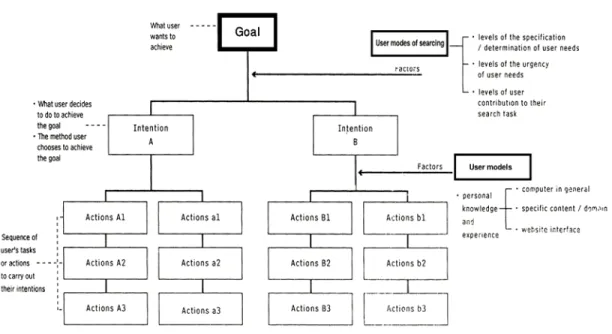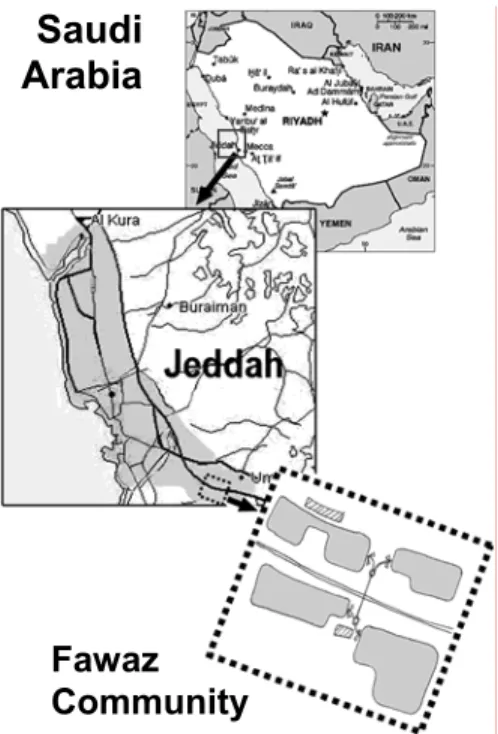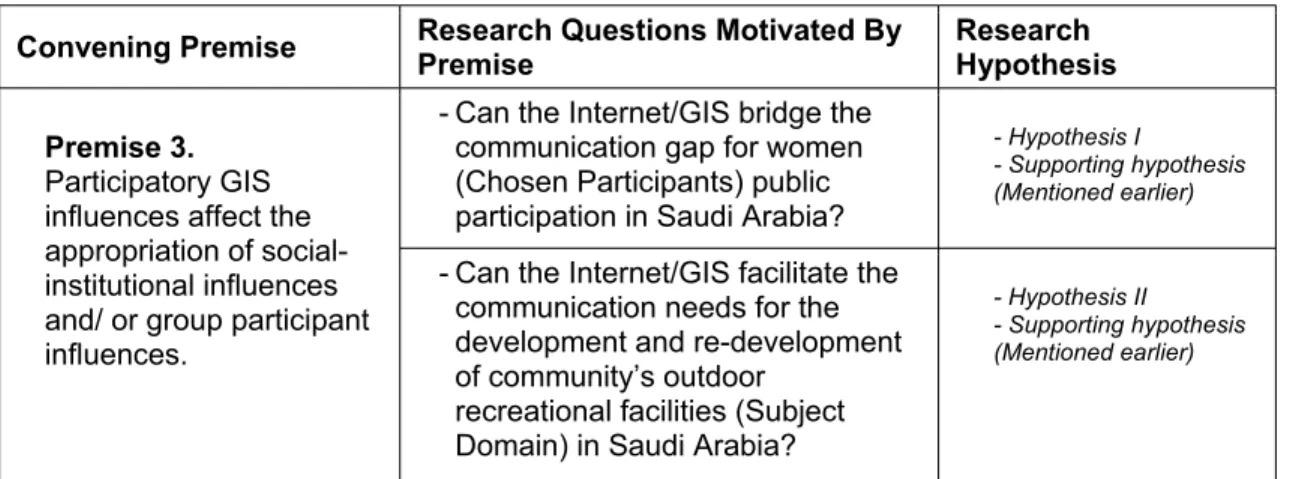Citizens, in such countries, have been given more opportunities to participate in the decision-making process on spatial issues important to them. The research found that there is a legitimate enthusiasm among the public and the officials of the research sample for the adoption of electronic public participation. 93 16 Modified version of existing workflow. from female resident comments) if SCOPS-02. will apply to community associations.
94 17 Modified version of existing workflow. residents' comments) if SCOPS-02. is carried out in the local municipality .. knowledge of the subject of discussion,. 114 25c This page has a form that includes some hidden fields (filled . with the parameters of the selected location). This page has a form with hidden fields. populated with the parameters of the clicked element on the previous page).
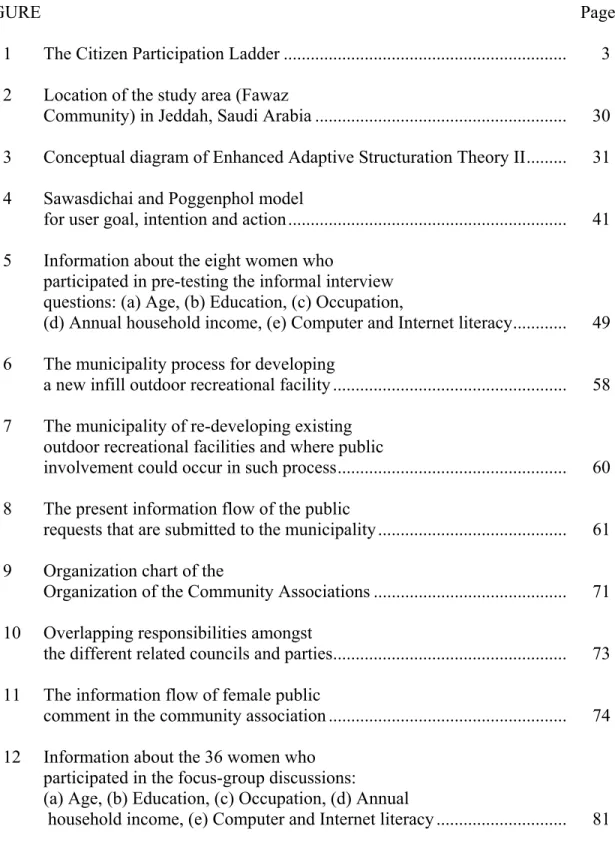
INTRODUCTION
In the Saudi Arabian context (the focus in this research), applications and research on implementing technology participation models for community participation in the planning and decision-making process relevant to the community's built environment are rare. The segregation of the sexes (not allowing women to mix with unrelated men) greatly affects many aspects of social life in the country. Unfortunately, community participation in the municipal planning and decision-making process is currently almost absent, despite the efforts made (explained in the literature review section).
This research is the first in Saudi Arabia to study a participatory technology model for female community participation in the planning and decision-making process related to the community's built environment.
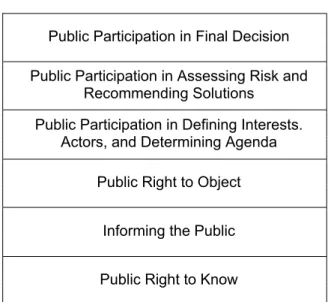
LITERATURE REVIEW
Public Participation, Internet and GIS
Planners pay particular attention to public participation and community organizations (Jones, 1990) because community input is critical to defining local issues. The technology has great potential to leverage community members' local knowledge (i.e. indigenous knowledge). Alkodmany (2001) stated that "in an environment where computer and Internet technologies are becoming mainstream, it is important for planners to develop ways to leverage these technologies to work effectively with the public." Batty (1998) mentioned that computer visualization and online surveys offer a new way to support and facilitate democratic decision-making.
Graham (1996, p. 2) stated that the web will generate "a new public sphere that supports interaction, debate, new forms of democracy and 'cybercultures' that feed back into a revival in the social and cultural life of cities." support'' Howard (1999) mentioned a number of the Internet advantages: the participation meetings are not limited by a place or time, but are available 24 hours a day, seven days a week. Such availability enables participation at any time as long as the Internet is accessible and thus provides opportunities for more people to participate in public consultations.
Confrontation may discourage less vocal individuals from expressing their opinions at public meetings, while encouraging vocal individuals to probably dominate such meetings and express their opinions that may be opposite to those of the former. Carver and Peckham (1999) mentioned that GIS has started to appear on the Internet during the last few years ranging from simple demonstrations and references to GIS use, to more complex online GIS and spatial decision support systems. For example, in a study conducted by Renn et. 1995), a single model of public participation in environmental decision-making called the "analytic-deliberative process". has been applied in Germany, Switzerland and the United States.
The integration of internet and GIS in public participation process can be very effective in reducing the gap between the knowledge of public officials and the public people. It can also help to feed the public with the local government's professional knowledge.
- Status of Women in Islam
- Status of Women in Saudi Arabia
- Technological Advances
- Rapid Urban Development
The issue of the status of women in Islam (generally) and in Saudi Arabia (specifically) is complex and often misunderstood in many of its aspects. This can be clearly seen when looking at the two primary sources of the Islamic rules (i.e. the Qur'an and the Sunnah). Part of the controversy over the status of women in Saudi Arabia can be traced to the conflicting references to such an evaluation.
That is, in most international literature, most authors assess the status of women in Saudi Arabia according to international human rights standards. Mtango (2004) and others have mentioned that the laws in Saudi Arabia are not an accurate representation of Islamic law. For example, the Saudi government claims to value women's rights according to Islamic standards (as mentioned above), but in reality the sources of Islamic law do not necessarily support the correct understanding of the law that the Saudi government applies.
Committee members say the association will be allowed to seek explanations for decisions related to women's legal rights (Fatany, 2004). Expanding women's participation in expressing their opinion and participating in public affairs based on Islamic regulations was among the recommendations made by the Second National Dialogue Forum held in 2003 (King Abdulaziz Center for National Dialogue, 2003). Women in Saudi Arabia are also excluded from the cooperative citizens' councils that organize some of the municipal branches.
Based on a survey conducted by Abu-khalid, 86% of female participants and 68% of male participants believe that local traditions and norms are the reason that interferes with women's participation in public life. One of the recent trends of the Saudi government in solving widespread urban problems is the decentralization or democratization of the management of municipal affairs.
Summary
Al-Hathloul and Mughal (2004) mentioned that the pace of development in Saudi Arabia was so rapid that limited planning efforts were ineffective. A step in this trend has been taken by paying more attention to public consultation in local municipal affairs. As mentioned above, municipal elections first came to light in the country in 2003 when the government decided to activate the municipal councils with half of their members elected directly by the citizens (Ministry of Foreign Affairs, 2003).
As a result, no one knows whether technological approaches can work or not to expand female participation in Saudi Arabia in particular, despite the fact that they have worked in many other countries.
PROBLEM STATEMENT
HYPOTHESES
OBJECTIVES
RESEARCH DESIGN AND METHODS
Study Area and Sample
The total estimated number of residents in Fawaz Community is 8,076 (based on the estimated average household size of 6.73 in Saudi Arabia in 2005) (UN Human Settlement Program, 2002). The study sample consisted of 66 people: 56 public women were selected from Fawaz Community, and 10 male/female key workers were selected from Jeddah Main Municipality, Jeddah Municipal Council, the Municipal Branch of Fawaz Community (called South Municipality Branch), and the community association Fawaz Community. To avoid violating Saudi customs regarding gender interactions (explained earlier in the literature review), the researcher trained his wife (a Saudi graduate student) to play her role when direct interaction with women was required during data collection.
Theoretical Framework
Aspects are linked through premises (P1-P7), which describe the relationships between the convocation, process and outcome phases of decision-making. The structuring process of what/who affects what/who is the embedding context of EAST-2. Neither the technological nor the social nature of an organization dominates change - they work together to structure and thus reconstruct each other - the basic idea underlying "adaptive structuring".
This can lead to verification of the theoretical framework and therefore a logical basis on which guidelines can be based for the design and use of GIS in participatory decision-making. The questions mentioned earlier and hypothesis of this research fall under the third premise of the theory. In other words, P3 of EAST2 initiated the questions and testable hypothesis of this research (Table 1).
Can the Internet/GIS facilitate the communication needs of outdoor community development and redevelopment?
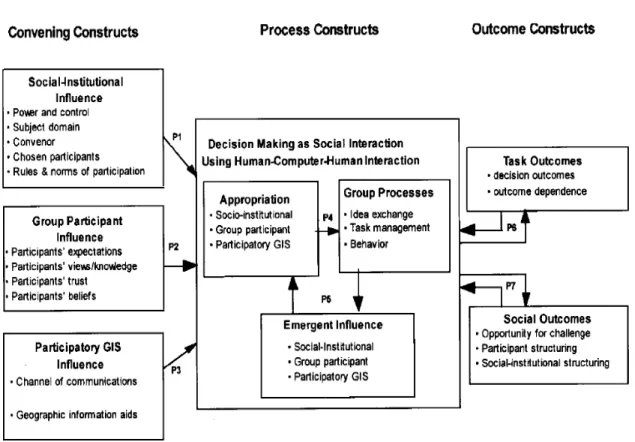
Research Phases
- Phase I: Investigating the Current Status of Public Participation
- Data Capturing Instruments
- Data Analysis Techniques
- Phase-II: Developing and Evaluating a Prototype for Female Public Participation Participation
- User Analysis
- Prototype Developing and Testing
- Prototype Evaluation
Ethnographic instruments reinforce each other in an effort to draw a complete picture of the environment under study. Data were captured on tape or paper based on the agreement of the people met. The researcher did his best to record all the details rather than filtering the relevant information.
These interviews aimed to collect data from the municipality and the community association of the study area. All the formal interviews conducted were firstly audio recorded, secondly transcribed and thirdly entered into a computer to make searching and accessing them efficient and effective. Audio recording of these interviews was impossible due to the refusal of most of the participants.
They backed up and supported some of the other information collected as well. a) Triangulation: Triangulation was essential to the validity of ethnographic research. Based on the user analysis and data collected in Phase I, a website was developed using Microsoft FrontPage to act as an open-access virtual meeting room for the local female residents, the local community association and the local council department of the study. area. The usability of the prototype website was tested to ensure that the website performs the function it was designed for with the minimum amount of user frustration, time and effort (Pedersen, 2003).
The usability test of the website was given to five female Internet users selected from the study sample. This was done after modifying the SCOPS-02 prototype based on the results of the usability test. The researcher's original plan was to meet and invite a number of public officials from Jeddah's main municipality, the municipal department of the study area, and the community association of the study area to participate in the evaluation of the SCOPS-02 prototype.
However, such a plan was changed after the chairman of the KS of the area in question advised the researcher to carry out such an evaluation with members of the KS council.
